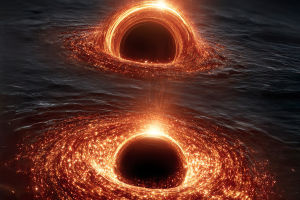Hey Lykkers! Ever find yourself staring up at the stars, wondering if there’s another planet out there just like our own? Like, maybe a twin Earth with oceans, forests, and who knows—maybe even life? I’ve been totally obsessed with this idea lately, and guess what? Scientists are on the exact same mission.
Let’s chat about the incredible search for exoplanets and how astronomers are hunting for that elusive Earth 2.0.
What Are Exoplanets?
Exoplanets are planets that orbit stars outside our own solar system. We didn’t even know they existed until the 1990s, and now thousands have been discovered!
These worlds come in all shapes and sizes—from giant gas planets bigger than Jupiter to rocky planets similar to Earth. Finding these planets is tricky because stars are super bright, and planets are tiny and faint by comparison.
How Do Scientists Find Exoplanets?
Astronomers use clever techniques to spot exoplanets, mostly by observing the effects they have on their host stars:
Transit Method: When a planet passes in front of its star, it blocks a tiny bit of the star’s light. Telescopes like NASA’s Kepler and TESS watch for these tiny dips in brightness, which hint at a planet passing by.
Radial Velocity: Planets tug on their stars as they orbit, causing the star to wobble slightly. Sensitive instruments detect these wobbles by measuring changes in the star’s light spectrum.
Direct Imaging: Though rare and difficult, sometimes scientists capture actual images of exoplanets by blocking out the star’s bright light.
What Makes a Planet “Earth-Like”?
Not every exoplanet is a potential Earth 2.0. Scientists look for a few key features:
Size and Composition: Rocky planets similar in size to Earth are prime candidates, as gas giants aren’t suitable for life as we know it.
Habitable Zone: Often called the “Goldilocks Zone,” it’s the sweet spot around a star where conditions are just right—not too hot, not too cold—for liquid water to exist, making it a potential cradle for life.
Atmosphere: A planet’s atmosphere can protect life from harmful radiation and help regulate temperature. Detecting gases like oxygen, methane, or carbon dioxide could hint at biological processes.
Why Are We Searching for Earth 2.0?
Finding an Earth-like planet could revolutionize our understanding of life in the universe. It could:
- Help answer if life exists elsewhere beyond Earth.
- Offer future possibilities for human colonization or exploration.
The Role of New Technology
Upcoming telescopes like the James Webb Space Telescope and the planned Extremely Large Telescope will boost our ability to study exoplanets in more detail. These instruments will analyze planetary atmospheres, search for biosignatures (signs of life), and even capture images of smaller, rocky planets.
Cool Discoveries So Far
Proxima Centauri b: The closest known exoplanet to Earth, orbiting the nearest star, Proxima Centauri, just over 4 light-years away. It’s in the habitable zone but may be bombarded by stellar flares.
TRAPPIST-1 System: Seven Earth-sized planets orbiting a cool dwarf star. Several are in the habitable zone, making this system a hot topic in astrobiology.
What’s Next?
The search for Earth 2.0 is just getting started. With each new discovery, scientists learn more about what makes a planet livable and how unique Earth really is. As telescopes get better and data pours in, the chances of finding a true Earth twin grow—bringing us closer to answering that ultimate cosmic question.
So, Lykkers, next time you look up at the night sky, remember: out there are countless worlds waiting to be discovered. Maybe one day, Earth 2.0 won’t just be a dream but a reality.
Want more space stories or to dive into how we might travel to these distant worlds? Just ask!


